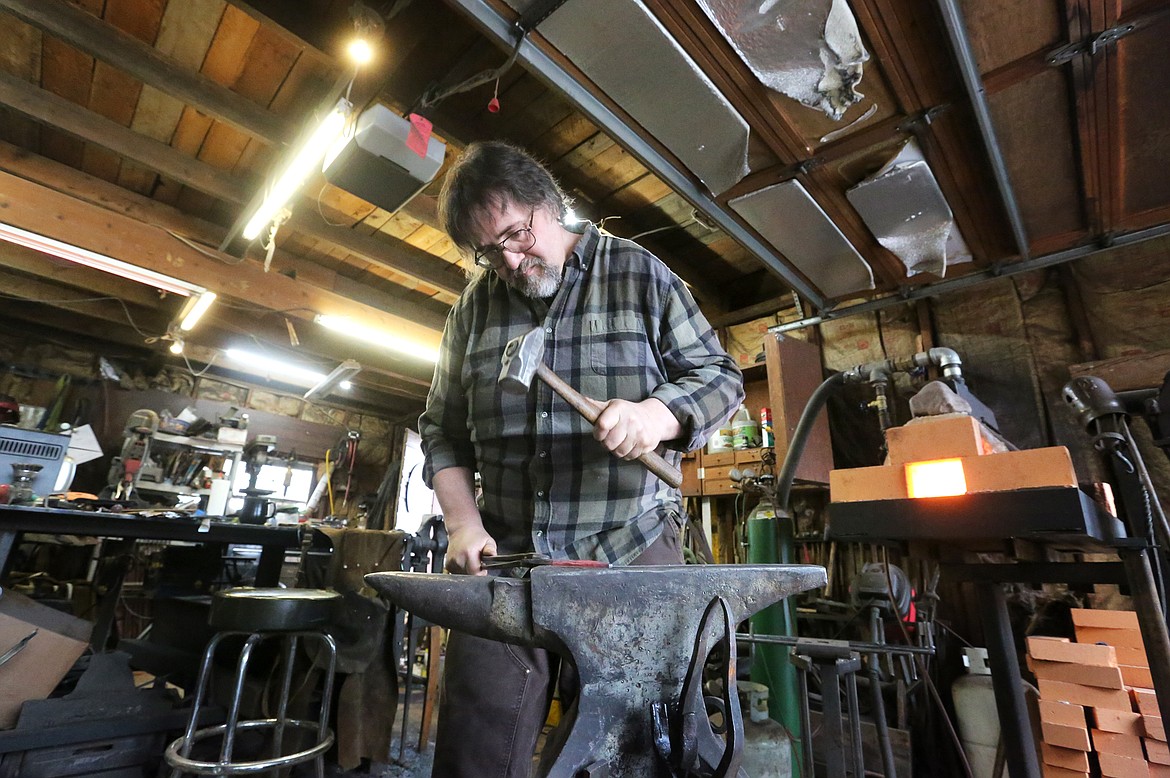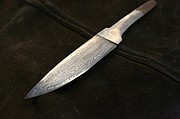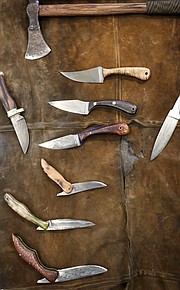Columbia Falls blacksmith wins History's 'Forged in Fire'
Columbia Falls blacksmith Scott Sweder cut through the competition to win $10,000 and the title of Forged in Fire champion on History Channel’s “Forged in Fire.”
Sweder, who operates Iron Bear Knife and Forge, appeared on the Jan. 8 episode titled “Sword in the Stone” in the show’s seventh season. “Forged in Fire” pits four skilled blacksmiths against each other in a series of timed challenges.
Sweder said he was ecstatic about his victory and plans to use his winnings to pay off bills.
“It tested my abilities as a knife-maker more than anything else I’ve done,” he told the Daily Inter Lake. “It’s the first time I had ever won anything quite like that.”
Sweder was selected as a contestant last year after answering an online casting call that involved submitting images of his work and completing a number of interviews. Filming took place in mid-August 2019 at his shop and on-set in Connecticut, not far from New York City.
Sweder said contestants were given no information about the challenges beforehand and were monitored closely by staff, akin to a stage mom, to ensure they didn’t speak with judges between takes.
For the first challenge, all four contestants were tasked with creating a 100-layer blade of Damascus steel. Damascus is a beautiful but technically challenging process, where steel is repeatedly folded and hammered, resulting in a water-like pattern. Sweder said the process can take days to perfect, but participants were given just three hours to create a blade fit for the judge’s inspection.
“I did make 117 layers — I went above what the judges needed,” Sweder said.
But because he spent so long achieving the desired effect, he was behind on his handle.
His knife survived the first torture test, where judges chopped the knives into a stone block. One the four contestants was eliminated in that first round, leaving Sweder and two others headed into the second challenge. In the next event, the bladesmiths had to put a handle on the blades they had made in the first round.
Despite the competitive environment, Sweder kept his focus on his own work.
“I knew everyone else, they were going to do the best work they could, so I had to make sure that’s what I was doing, too,” he said. “I was doing it just to really challenge myself. It’s a lot to have to forge anything substantial and get something functional in a three-hour period. I wanted to see if I could do it.”
The other competitors supported each other throughout the event, he said. Rather than being cutthroat, the blacksmiths cheered for one another and one contestant even helped 18-year-old Colton Kiso twist his blade.
Sweder was worried he wouldn’t make it past the second round since he hadn’t had enough time to sharpen his blade in preparation for the cutting test and set his handle just 5 minutes before the end of the round.
“I was pretty well sure I was going to be going home after that, but I got lucky and one of the other smiths’ knives did not cut as well as it should have,” he said. “I squeaked by.”
For the final test, it was down to Sweder and Kiso.
They were given 35 hours over the course of four days to create a Medieval broadsword in their home forges. Film crews flew out to Montana to get an up-close look at Sweder on his home turf.
“They show up at your house at a certain time and say, ‘OK, you can start now,’ and they time you,” he recalled. “I kind of got used to a camera being pointed at me because all day long they followed me around with a camera.”
For his sword, Sweder decided to challenge himself to forge a multi-bar Damascus, a blade with three types of Damascus steel.
“I don’t think I’ve ever seen another smith do that for their weapon before. They’ve done Damascus, but not three different kinds — I wanted to make something that would be worth winning,” Sweder said. “It came out absolutely gorgeous. Surprised even myself how nicely it came out.”
The testing of the final blades was grueling. Judges sliced them through a ballistics dummy and then struck them against a log and finally, a cow skull.
Judges halted the testing of Kiso’s blade early after it bent when striking the cow skull and was determined to be unsafe. But Sweder hadn’t won yet — his blade still needed to pass the final inspection.
Sweder enjoyed the testing portion of the show, noting it was rare to see his creations tested to their limits. It fared well against the dummy and survived the log and skull, striking through the bone twice.
Doug Marcaida, a judge on the show, lauded Sweder’s work.
“First up, that is beautiful to look at. .. every slice, or should I say chop, dug deep into this ballistics dummy,” Marcaida commented. “The kind of weapon and damage you can do with this — it will kill.”
With Kiso eliminated and Sweder’s blade a success, he was declared champion.
“I hope that by doing this I can go full-time bladesmithing,” he said during the show.
He accepted the honor with gratitude, offering a smile and a humble thank-you to the panel. Sweder’s sword will join a host of others crafted by previous champions on the wall of the set — a reminder to the next round of smiths of what can be accomplished with a lot of heat and even more determination.
Reporter Mackenzie Reiss can be reached at 758-4433 or mreiss@dailyinterlake.com.





